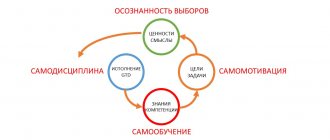Deception in body language and facial expressions
All people are different. The way of perceiving the world, thinking, reacting to a particular event is different for all people. Lying is one of these manifestations and is also expressed in different ways.
It is believed that there is no common set of gestures, but if there was one, we would be able to determine who is lying to us. The most relevant lie is reflected when he (the person) provokes emotions.
The body reflects these emotions in its own language. However, to be sure that you are being lied to, you need to perceive a combination of gestures, facial expressions, and speech. Lying at a high level requires increased self-control, which means tension.
Types of lies
A lie is any false information communicated by one person to another. Often people lie completely in vain. They distort the truth, try to embellish it, or suppress important details. Although there is no need to lie.
Depending on the goals pursued by the “liar,” the following types of lies can be defined:
- Unconscious. Being under the influence of strong emotions, a person does not realize that he has embellished part of the story with unreliable facts. Very often, young children lie unknowingly simply because they are not yet able to remember a large amount of information and resort to the help of their wild imagination.
- Deliberate. In this case, the person is well aware that he is lying in pursuit of his goal. Deliberate lies are not always used to achieve any selfish goals. It happens that people deliberately hide the truth, wanting to protect their loved ones. This is the so-called white lie. When, for example, someone hides their serious illness from relatives so as not to cause them suffering.
- Active. This is a type of deliberate lie that does not have a clear purpose. A person simply invents events that did not actually happen to him. Most often, this is done in a conversation with unfamiliar people in order to seem like a more interesting and intelligent interlocutor.
- Passive. Such lies manifest themselves in the suppression of facts. For example, a man who has been in a relationship with a woman for a relatively short time is in no hurry to tell her that he is married and has children.
- Pathological. This type of lie is characteristic of people with low social status. They invent a whole life for themselves in which they occupy a high position or have a noble origin. At the same time, the liar himself sincerely believes in it.
The most common reason for lying is fear. A person who deceives others, but does it unprofessionally, can be easily recognized by his facial expressions and gestures, and by his eyes. They will signal that he is scared.
The truth is somewhere on the left
A person may be overtly or covertly tense. To determine this, look carefully at the person’s left side. From a neurophysiological point of view, control over the left half is less strong than over the right. The brain, with its left and right hemispheres, controls the sides of the body differently.
- Speech, intelligence, and the ability to do mathematics are the domain of the left hemisphere.
- Imagination, emotions, abstract thinking are the work of the right hemisphere.
- Management occurs generally in the form of crossing. The left hemisphere is the right side of the body, and the right hemisphere is the left side.
For example, we communicate with a right-handed person. During the conversation, he gesticulates vigorously, using his left hand. It is very likely that this is a liar. This is most pronounced if the right hand is almost not involved in the matter. If such a discrepancy is observed, the person is definitely not sincere. If the same disorder is observed in the face, i.e. the left or right half is more active, perhaps also a lie. Particular attention should be paid to the left side.
Who knows how to recognize a lie?
Astrologers say that among all the zodiac signs, Cancers are the best at recognizing lies. Why? The fact is that they feel the mood very subtly and understand the motivation of other people. In other words, Cancers have highly developed intuition. They sense deception without having any special knowledge of how to recognize lies.
Recently, the profession of a profiler has become very popular. A profiler is a person who recognizes lies by facial expressions, gestures, and demeanor of the speaker. People of this profession are in demand during business negotiations, issuing bank loans, when interviewing future employees, etc.
Their training system is based mainly on the works of such famous psychologists as Alan Pease and Paul Ekman, who for many years studied the mechanisms of lies and developed methods for detecting them. Based on their books, the popular series “Lie to Me” was filmed, the main character of which is an expert in detecting lies.
Some of Alan Pease's books, written with his wife Barbara:
- “Body language.”
- “The language of relationships.”
- “New body language.”
Paul Ekman's most popular books on detecting lies:
- Psychology of lies.
- Recognize a liar by his facial expression.
- Psychology of emotions.
These are quite extensive works. If you are seriously interested in such an activity as detecting lies, then I advise you to read them. In this article, I will tell you how you can identify a liar based on the most obvious signs.
Features of the look
- You can also tell a liar by your eyes. First of all, this is indicated by a running glance. Undoubtedly, such a phenomenon may be a sign of excessive shyness or a feeling of confusion. However, if you note these manifestations, it is still worth questioning what your friend says.
- Staring can also indicate that you are being lied to. In this way, the interlocutor is trying to track how you react to what he is telling, whether you believe his words or not.
- If during a conversation you notice that your opponent’s pupils are dilating, he may be deceiving you. Unless it reflects a normal reaction to the topic of conversation.
How to spot a lie
If you are not Cancer by zodiac sign, do not have very developed intuition and do not master the art of profiling, then carefully observe the interlocutor to recognize deception. An unprofessional liar will definitely give himself away. Especially if it is a Virgo woman. According to astrologers, they are the ones who absolutely cannot lie.
By facial expressions
During a conversation, look at the interlocutor and watch his facial expression. Scientists have found that a person's facial expression usually changes every 10 seconds. If the change of emotions on the speaker’s face occurs more often, then most likely he is lying.
Another important sign of deception is a discrepancy between a person’s words and emotions. For example, the interlocutor told you that he was sad, but his facial expression did not change and remained calm. Or he belatedly showed sadness on his face. For someone who speaks the truth, emotions and words will always coincide and appear synchronously.
Also, a liar may have an unnatural smile on his face, more like a wax mask. At the same time, the speaker stretches his lips too much, moving the lower jaw a little back.
By gestures
Unlike facial expressions, human gestures literally catch the eye. The main signs of lying are:
- excessive gesticulation if the person you’re talking to doesn’t usually behave that way;
- complete absence of gestures;
- the use of theatrical, feigned gestures.
Touching your eyes during a conversation can also be taken as a sign that they are trying to deceive you. At the same time, girls seem to correct their makeup by running their fingers under their eyes, and men rub their eyelids. Thus, the interlocutor avoids eye contact. However, this gesture can indicate not only a lie, but also simple fatigue.
Wanting to hide the truth, many people begin to touch their ears or scratch their neck. Moreover, this gesture is repeated quite often - more than five times during the conversation. Many people, when they lie, are very worried and worried. Their pulse quickens, they feel hot, and they sweat a lot. To cool themselves down at least a little, liars pull back or unbutton the collar of their shirt or sweater.
However, if a person is angry or upset about something, he will also use this gesture. To avoid making hasty conclusions, simply ask your interlocutor again. The person who is lying to you will most likely hesitate and remain silent for a while.
By phone
It is quite difficult to recognize deception in a telephone conversation, because you can only monitor the rate of speech, intonation, and volume of the voice. In addition, the connection quality may not be the best. Therefore, if you doubt what you hear, simply ask again, ask clarifying questions to catch the liar in his own contradictions and inconsistencies. Or ask for a personal meeting to personally observe the facial expressions and gestures of your interlocutor.
An indirect sign of lying during a telephone conversation may be coughing or clearing your throat. A person who tells a lie feels very tense, begins to sweat, and as a result his throat becomes dry. But this will not necessarily indicate deception.
Correspondence
It is even more difficult to detect lies in correspondence on social networks. After all, you don’t see or hear your interlocutor. The only thing that can be analyzed in an attempt to detect deception is text messages.
You can suspect that your interlocutor is lying to you if he:
- started writing too long sentences, cluttered with unnecessary facts;
- unexpectedly began to place punctuation marks and capital letters, although this had not been noticed before;
- Instead of short and clear messages, I began to write detailed and long comments.
A liar's change in writing style occurs unconsciously. In this way, he tries to convince himself that he is not lying, but is just making things up. At the same time, he is so carried away that when talking about some event, he describes it in the smallest detail. But most often we cannot tell in detail what we did yesterday.
Did you wash your hands?
If, when communicating with you, the interlocutor tries to put his hands in his pocket or close his palms, we can with a certain degree of confidence assume that he is hiding something. This feature is most pronounced in children.
Hiding your palms or keeping them open can be used against you even in a regular market. An experienced salesperson can see how your palms are positioned when you refuse a purchase and can understand how much you really need it. If you cover your mouth with your hand, then here we see a desire not to blurt out too much. This may be indicated by tension in the mouth muscles, as well as lip biting.
Posture is very important in determining a person's honesty. Let's say you observe a person in a tense or uncomfortable position. He can constantly squirm, trying to make himself more comfortable. This means that the topic of conversation is bothering him and he may not agree with it. Liars can lean and cross their legs. Usually, if a person is truthful, then his posture is relaxed and comfortable.
Emotional Details
The inventor will tell you a ready-made made-up story, rarely supported by emotional overtones. He might say something like, “I’m sorry my bus left without me.” A sincere person, in addition to the facts themselves, will also share with you his experiences: “How is this possible! All the buses run on schedule, and what are we paying them for anyway? I had to wait for twenty minutes!” Such a story will most likely be non-fictional.
Why do people lie
Nobody will just deceive you. Sometimes people lie for selfish purposes, other times for good. Psychologists have identified several main reasons that push people to cheat.
Why do people lie:
To benefit. Insecure people solve problems with the help of others. If your friend cannot get a job, he will lie that the vacancies are filled or offer a small salary in order to still live at someone else’s expense. Or one colleague will slander another in order to get the desired position. To protect yourself. We have been familiar with such lies since childhood. We told our parents that we didn't break the cup, drop the plate, or offend the kids. This way we avoided punishment.
White lie. Deception does not carry malicious intent, but is done to help or not harm a loved one. This is possible in case of serious illness, departure, pregnancy and other circumstances. To attract attention. Many people make up tall tales about their personal life or work in order to interest their interlocutor. But, as a rule, such deception is revealed and only brings harm, not benefit. Lying allows you to gain control over a person. If your husband’s mother does not like his choice, then she will try to convince him in every possible way, putting you “in a bad light.”
More often, people who are insecure, infantile, or children deceive. Therefore, if you catch someone in a lie, then do not react too harshly, as you will only worsen the situation and force the interlocutor to defend himself.
Learn to read body language and gestures!
All people lie - it’s just a fact, a truth of life that cannot be avoided. Trying to achieve their goals, those around us (and we are no exception), at best, simply hide the truth, at worst, they deceive each other in the most vile way
Therefore, in our harsh and cruel world, where hypocrisy and lies are all around, it is so important to be independent of other people’s whims. In addition, there is something that gives away a lie and exposes the deceiver - these are gestures and facial expressions
So why not take advantage of this?
A person, as a rule, does not even notice what gestures accompany his dialogue, and, nevertheless, gestures and facial expressions are a subconscious demonstration of his true feelings, and if you learn to recognize these feelings, then you can easily expose the selfish goals of your interlocutor. Moreover, knowing the gestures of lying, you can learn to use them to your advantage, and correctly hide your feelings from others!
Non-communicative gestures
Gesture adapters – stress gestures
A more informative sign of a state of stress are non-communicative gestures - the so-called adapter gestures. They are also called self-soothing gestures. A person resorts to them unconsciously in order to regain peace of mind in a stressful situation. The appearance of adapter gestures is a sure sign that a person is trying to take control of himself and the situation. In this case, the verifier needs to answer the question: “Why did the person being interviewed begin to control himself?” It must be borne in mind that these gestures are unconscious - they are poorly conscious.
Self-adapter gestures, as a rule, are associated with touching oneself, one’s body. By observing the level of manifestation of self-adapter gestures, one can judge the level of stress of a person. The higher the self-adaptive gestures, the higher the stress level. When a person covers his face with his hands, in different contexts the verifier can confidently talk about shame, disgrace or grief.
Types of self-adapter gestures
- Touching the head;
- Touching the body;
- Legs.
Manipulative Gestures
Adaptive gestures also include manipulative gestures, which perform the same function as self-adapter gestures, but they are based on manipulation of objects. A person who lies undergoes a transition from the right hemisphere to the left, and it is during this period that manipulative gestures appear. This is due to the fact that the transition from the right hemisphere to the left always causes a pause in a person’s actions. Therefore, the function of manipulative gestures is not only adaptation, but also substitution. Moreover, each person has his own especially favorite manipulations that are unique to him.
The duration of manipulations can vary from a few moments to many minutes.
Manipulative gestures are used by a liar in two cases
- Masking of the point of indicative freezing (uncontrolled pause before answering);
- Coming up with the correct answer to a question.
Understanding the reason for the occurrence of manipulative gestures, the verifier, when asking a test question and if there is a manipulative gesture in a truthful answer, must double-check it by asking a question in a different wording after some time.
In a lie detection situation, there is no need to determine the exact meaning of each adapter gesture if the verifier pays primary attention to the structure of speech utterances. Since adapter gestures signal the level of stress, during the interview the verifier can understand how close he is to the required information
Self-cleaning gestures
A person tries to control himself in the presence of an observer or a group of observers, because it is believed that in the presence of other people it is indecent to perform gestures of self-purification. A person resorts to these gestures when he believes that no one sees him. Or a person begins to perform these actions unconsciously if he has the feeling that no one sees him.
In life, a person purifies himself, as a rule, in private, when no one sees him, he is in a complete state of immersion, focused on himself, and most importantly, he is safe.
For lie detection, this reason for the emergence of self-cleaning gestures can be quite informative and significant. In the situation of a survey conversation, and especially this can be informative in the case of a group conversation, the presence of self-purification gestures in a person’s non-verbal behavior indicates the absence of the emotion of fear, lack of interest in the event under investigation and is an additional marker of a person’s non-involvement.
Gestures of self-purification indicate a lie when the person being interviewed reports a strong emotional experience, but at the same time demonstrates actions to self-purify himself.
Another informative sign that can be attributed to information about the presence of deception is the absence of any gestures throughout the entire interview conversation. Some liars, wanting not to give themselves away, try to control all body movements and facial expressions. It looks as if the person has become stiff. At the same time, speech becomes brief, logical and not emotionally charged. The verifier immediately identifies this behavior as information about the presence of deception. Often liars do not understand that trying to suppress everything in themselves is evidence of hiding information.
Thus, due to the ambiguity of the origin of gestures, they must be interpreted and interpreted with extreme caution. A liar is given away by emblematic slips, an increase in the number of adapter gestures, dissonance of illustrators, an increase in the number of illustrator gestures in people with a fast mobile nervous system
Nonverbal signs
It is a well-known fact that only 20% of our communication consists of words: we transmit the remaining signals to our opponent through non-verbal gestures. Interestingly, these numbers vary everywhere; some researchers claim that non-verbal signs account for up to 97% of our conversations! Facial expressions, gestures, postures - everything that a person is not able to control intentionally: his body will involuntarily betray itself and give signals. This is good news for those who want to learn how to recognize nonverbal signs of lying.
Telling a lie is actually always unpleasant and is a lot of stress for the body. A person is forced to experience discomfort, afraid of exposure, which cannot but affect his face and facial expressions. The truth can be tracked by a person’s gestures, even before he has time to understand and correct them. The larger the lie and its consequences can affect a person’s life and his relationships, the more difficult it is to control himself and hide visible signs of excitement. Knowing this, even an experienced liar can be exposed.
Clear chronology
Returning to the same story from the example, let's say your man actually had dinner with his subordinate. In this case, most likely he took care of it in advance and came up with a beautiful story about their vacation with friends, written from start to finish, in chronological order.
Catch your interlocutor by surprise by asking about minor details. When answering questions, he will try to recreate the picture in the same sequence. If the man’s story is true, he will easily jump from one detail to another, unexpectedly returning either to the end or to the beginning of the story.
Your interlocutor may also openly admit that he doesn’t know or doesn’t remember something - this is another evidence in favor of his honesty. While a liar is unlikely to have gaps in his memories: his testimony is always clearly thought out and logically constructed.











